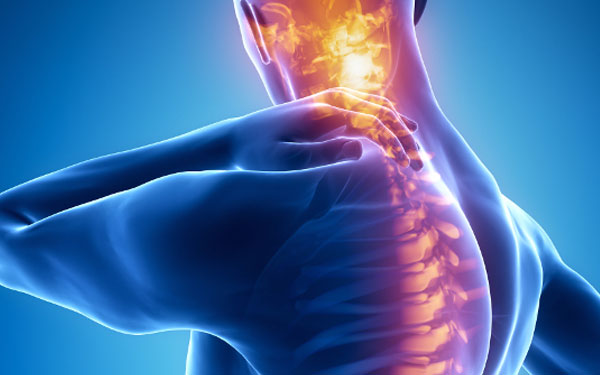Introduction
We at Buynetmeds.com understand how painful upper back discomfort may be on a daily basis. Whether you’re suffering occasional pain or chronic misery, recognising the underlying reasons and various treatment choices is critical to finding relief. In this detailed guide, we will decipher the nuances of upper back pain, including its origins, symptoms, and successful treatments.
Tapentadol 200mg is a larger dose of the medicine used to treat moderate to severe pain. Tapentadol 200mg, like the 100mg dosage, is an opioid analgesic. Its mode of action includes binding to the mu-opioid receptor and blocking norepinephrine reuptake, resulting in dual pain relief benefits.

Causes of Upper Back Pain.
Upper back discomfort may be caused by a variety of reasons, including poor posture, muscular strain, injury, and underlying medical disorders. [Your Company Name] is dedicated to providing people with information about these issues so that they may make educated health decisions.
Poor posture.
Long durations of slouching or sitting inappropriately may put unnecessary strain on the muscles and ligaments in the upper back, causing discomfort and suffering. Maintaining appropriate posture with ergonomic changes and taking frequent rests will help ease this strain.
Muscle Strain
Repetitive activities and inappropriate lifting of large things may strain the upper back muscles, causing discomfort and stiffness. Stretching exercises and good lifting methods may help reduce the risk of muscular strain.
Upper back injuries may occur from accidents, falls, or unexpected impacts, leading to discomfort and decreased movement. Seeking timely medical assistance and following specified treatment plans are critical for accelerating healing and avoiding long-term problems.
Tapentadol 100mg is a medicine used to relieve moderate to severe pain. It is an opioid analgesic. The major method of action is to bind to the mu-opioid receptor and impede norepinephrine reuptake. This multimodal mechanism helps manage pain by influencing both the opioid and noradrenergic pathways.

Underlying Medical Conditions
Certain medical disorders, such as arthritis, ruptured discs, or spinal anomalies, may cause upper back discomfort. [Your Company Name] pushes for thorough medical examinations to appropriately detect and treat these underlying illnesses.
Symptoms Of Upper Back Pain
Recognising the signs of upper back pain is critical for obtaining early assistance and treatment. By becoming acquainted with these indications, you may take proactive measures to alleviate suffering and enhance your quality of life.
Dull aching or sharp pain
Upper back pain may present as a dull, continuous discomfort or severe, stabbing pains, depending on the underlying reason. Monitoring the kind and degree of pain may offer significant information about its cause and severity.
Limited range of motion.
Individuals with upper back discomfort may experience limitations in their range of motion, making common actions like reaching and bending difficult. Gentle stretching exercises and specialised physical treatment may help you regain flexibility and mobility.
Muscle tension or stiffness
Muscle tightness or stiffness in the upper back is a typical sign of pain and discomfort. Heat packs, therapeutic massages, and relaxation methods may help relieve stress and promote relaxation.
Radiant Pain
Upper back pain may spread to the shoulders, neck, arms, or chest, aggravating discomfort and limiting functioning. Identifying specific locations of pain radiation may help healthcare practitioners develop personalised treatment approaches.
Treatment Options For Upper Back Pain
Finding successful upper back pain treatment choices necessitates a multidisciplinary approach suited to each patient’s unique requirements and preferences. [Your Company Name] advocates for comprehensive programmes that include lifestyle changes, therapeutic treatments, and medical interventions to obtain the best results.
Lifestyle Modifications
Simple lifestyle changes, such as keeping appropriate posture, engaging in regular exercise, and using stress management skills, may greatly reduce upper back discomfort and improve overall health.
Physical Therapy
Targeted physical therapy sessions led by licenced experts may help to strengthen muscles, increase flexibility, and relieve pain caused by upper back discomfort. Customised training regimens and manual methods are designed to meet particular demands and objectives.
Pain Management Techniques
Upper back pain may be temporarily relieved with a variety of pain management approaches, such as over-the-counter medicines, prescription meds, and topical therapies. However, consulting with healthcare specialists is necessary to find the most suitable and sustainable method to long-term pain treatment.
Interventional procedures.
Interventional therapies such as epidural injections, nerve blocks, or radiofrequency ablation may be indicated to relieve symptoms and improve quality of life in those suffering from severe or chronic upper back pain. These minimally invasive procedures accurately and effectively address the underlying causes of pain.
Conclusion
Navigating the complexity of upper back pain requires a thorough awareness of its origins, symptoms, and available treatment choices. [Your Company Name] is committed to providing people with the information and tools they need to successfully manage and conquer upper back pain, therefore returning energy and resilience to their lives.
Frequently Asked Questions (FAQs) About Upper Back Pain
Q1: What are the common causes of upper back pain?
A1: Upper back pain can result from various factors, including poor posture, muscle strain, injury, or underlying medical conditions such as arthritis or herniated discs.
Q2: How can I prevent upper back pain?
A2: Preventing back pain involves maintaining proper posture, practicing ergonomic principles, incorporating regular exercise to strengthen back muscles, and avoiding repetitive motions or heavy lifting without proper technique.
Q3: When should I seek medical attention for upper back pain?
A3: It’s advisable to seek medical attention if you experience persistent or severe back pain, pain radiating down your arms or legs, accompanying weakness or numbness, or if the pain follows a traumatic injury.
Q4: What are some effective treatments for upper back pain?
A4: Treatment options for back pain may include lifestyle modifications, physical therapy, pain management techniques such as medications or injections, and in some cases, interventional procedures to address underlying causes.
Q5: Can upper back pain be relieved without medication?
A5: Yes, back pain can often be relieved through non-pharmacological approaches such as physical therapy, heat or ice therapy, acupuncture, chiropractic care, and mindfulness-based techniques like yoga or meditation.
Q6: Is surgery necessary for treating upper back pain?
A6: Surgery is typically considered a last resort for treating back pain and is only recommended in cases where conservative treatments have failed to provide relief, and there’s identifiable structural damage that can be corrected surgically.
Q7: How long does it take to recover from upper back pain?
A7: Recovery time for back pain varies depending on the underlying cause, severity of symptoms, and individual factors. With proper treatment and adherence to recommended therapies, many individuals experience significant improvement within a few weeks to months.
Q8: Are there specific exercises that can help alleviate upper back pain?
A8: Yes, exercises targeting back muscles, such as gentle stretches, strengthening exercises, and posture correction techniques, can help alleviate back pain and improve flexibility and mobility.
Q9: Can stress contribute to upper back pain?
A9: Yes, stress and tension can exacerbate back pain by causing muscle tension and poor posture. Incorporating stress management techniques such as relaxation exercises, deep breathing, and mindfulness practices may help alleviate associated symptoms.
Q10: How can I prevent recurring episodes of upper back pain?
A10: To prevent recurring episodes of back pain, it’s essential to maintain good posture, practice regular exercise, incorporate ergonomic principles into daily activities, and address any underlying medical conditions or contributing factors through comprehensive treatment plans.























